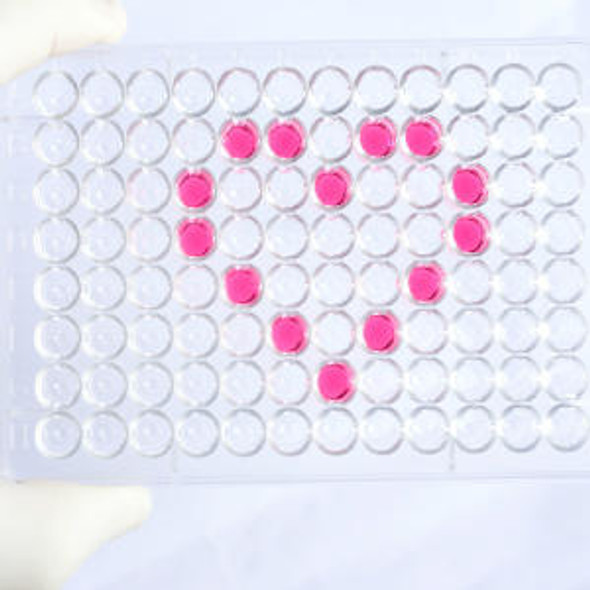Description
| Product Name: | Human Angiopoietin-related Recombinant Protein 3/ANGPTL3 (C-Fc) |
| Product Code: | RPES6324 |
| Size: | 10µg |
| Species: | Human |
| Expression Host: | HEK293 Cells |
| Synonyms: | Angiopoietin-related protein 3, ANGPTL3, Angiopoietin-5, ANG-5, Angiopoietin-like protein 3, ANGPT5 |
| Mol Mass: | 50.7 kDa |
| AP Mol Mass: | 60-70 kDa |
| Tag: | C-Fc |
| Purity: | > 95 % as determined by reducing SDS-PAGE. |
| Endotoxin Level: | < 1.0 EU per μg of the protein as determined by the LAL method. |
| Bio Activity: | Testing in progress |
| Sequence: | Ser17-Pro220 |
| Accession: | Q9Y5C1 |
| Storage: | Generally, lyophilized proteins are stable for up to 12 months when stored at -20 to -80°C. Reconstituted protein solution can be stored at 4-8°C for 2-7 days. Aliquots of reconstituted samples are stable at < -20°C for 3 months. |
| Shipping: | This product is provided as lyophilized powder which is shipped with ice packs. |
| Formulation: | Lyophilized from a 0.2 μm filtered solution of PBS, 5% Trehalose, pH 7.4. Normally 5 % - 8 % trehalose, mannitol and 0.01% Tween80 are added as protectants before lyophilization. Please refer to the specific buffer information in the printed manua |
| Reconstitution: | Please refer to the printed manual for detailed information. |
| Background: | Angiopoietin-like 3 (ANGPTL3) is a secreted glycoprotein that is structurally related to the angiopoietins. Mature human ANGPTL3 contains an N-terminal coiled coil domain and a C-terminal fibrinogen-like domain. ANGPTL3 is expressed in the liver from early in development through adulthood. Full length ANGPTL3 circulates in the plasma as do the proteolytically separated N-and C-terminal segments containing the coiled coil domain and fibrinogen-like domains,respectively. ANGPTL3 directly inhibits lipoprotein lipase (LPL) and endothelial lipase (EL), enzymes responsible for hydrolyzing circulating triglycerides and HDL phospholipids. ANGPTL3 promotes an increase in circulating triglyceride levels without altering VLDL or HDL secretion or uptake. ANGPTL3 expression in vivo is up-regulated by LXR agonists and down-regulated by insulin, leptin, and agonists of TRβ or PPARβ. |






